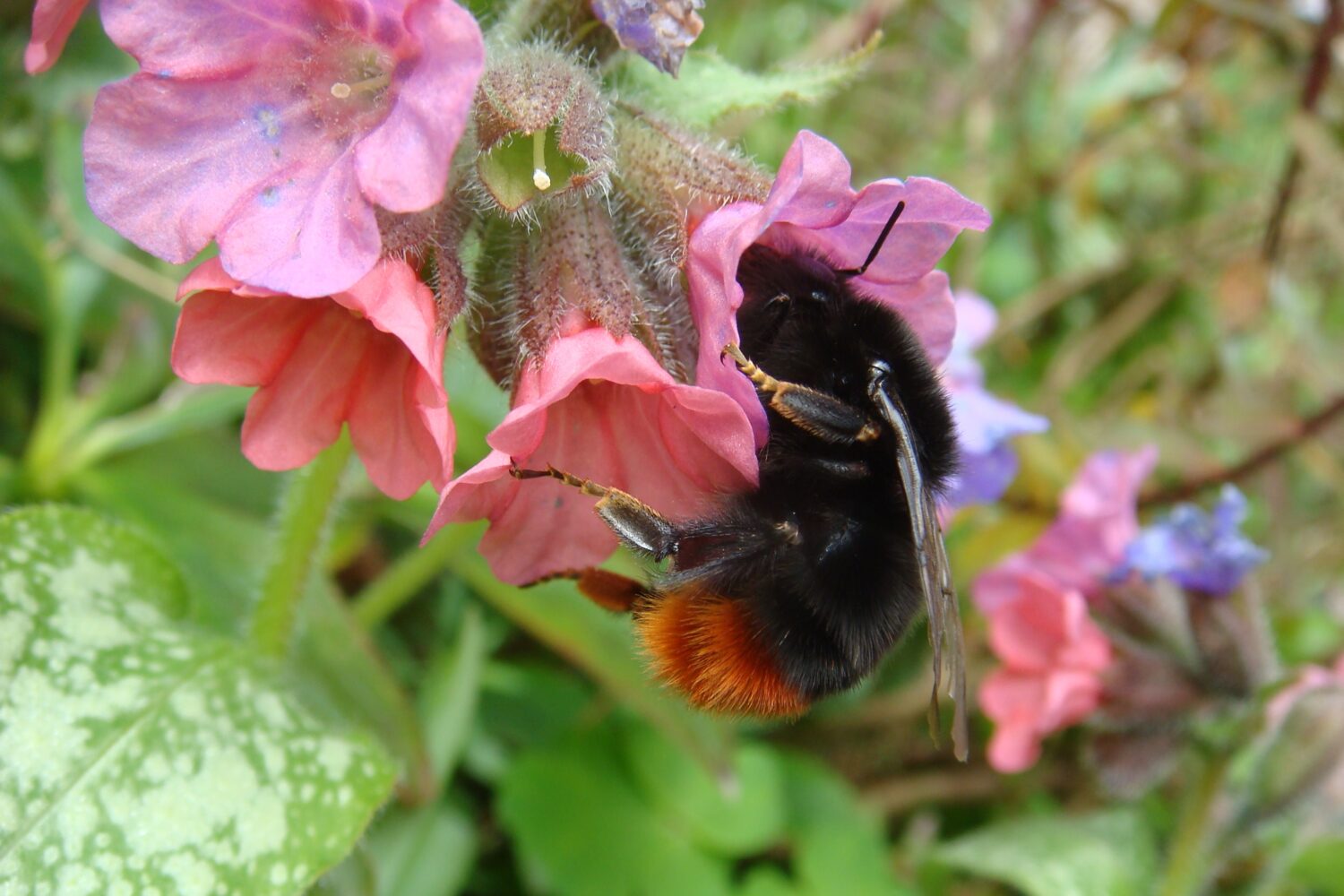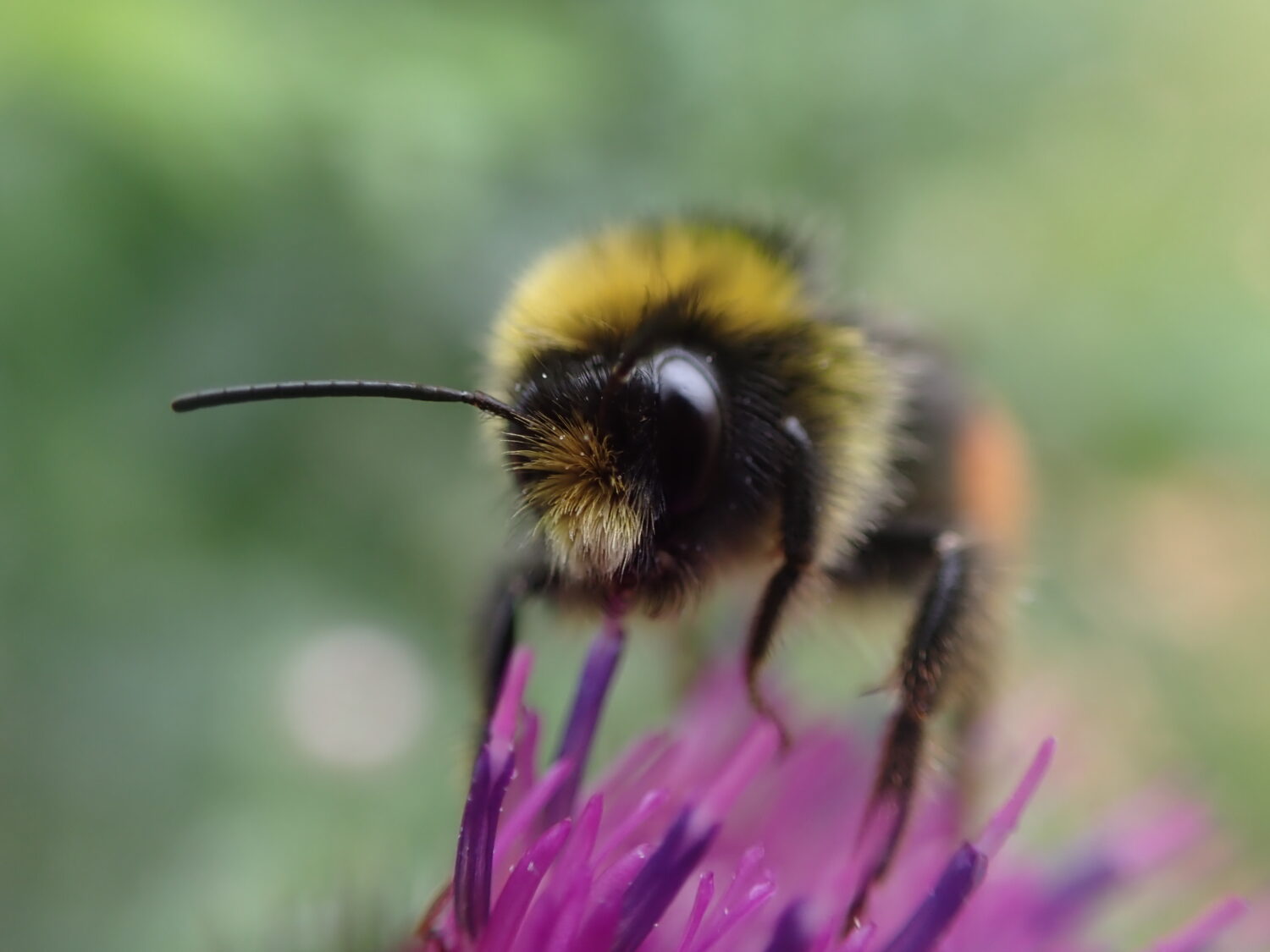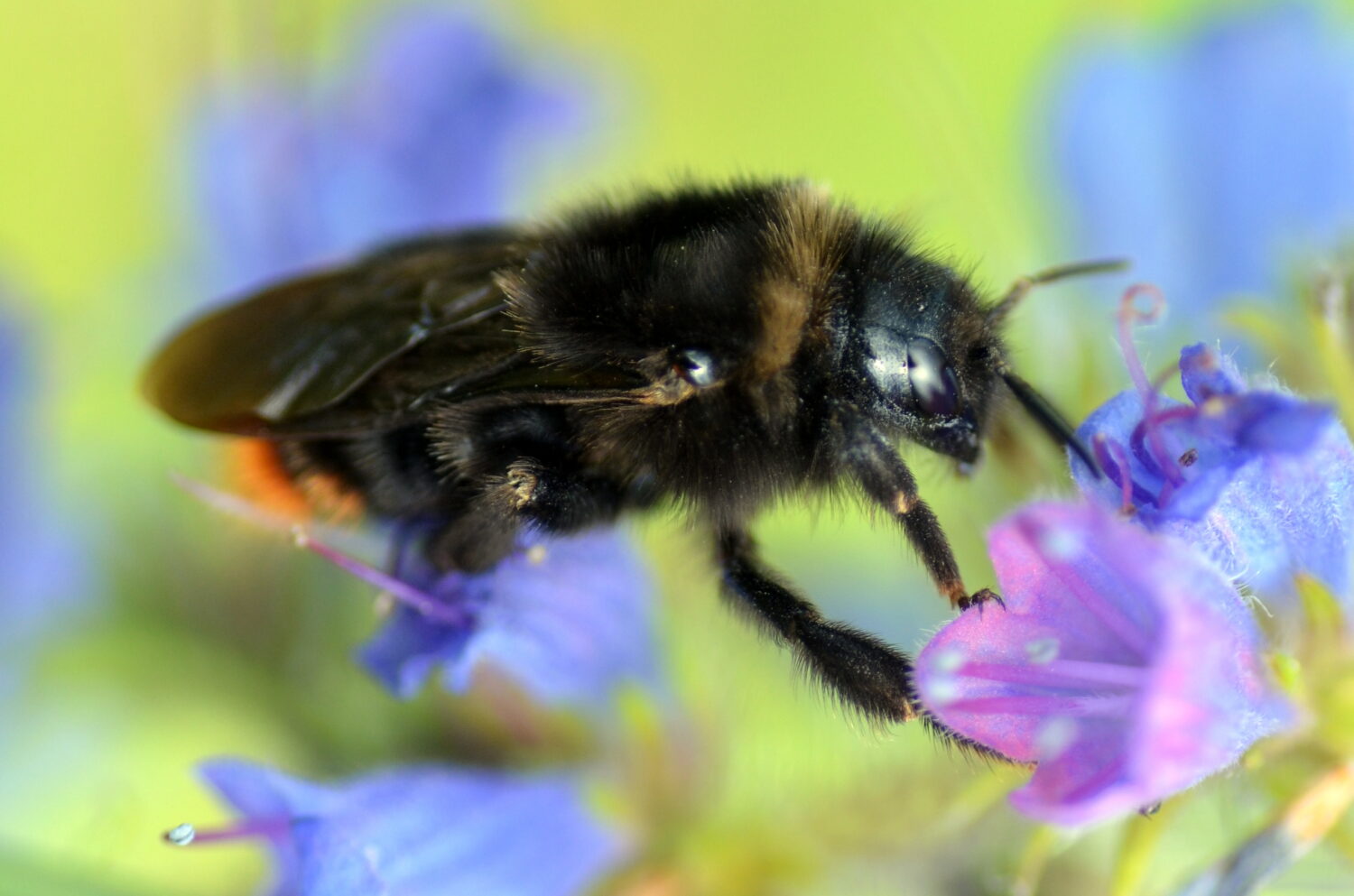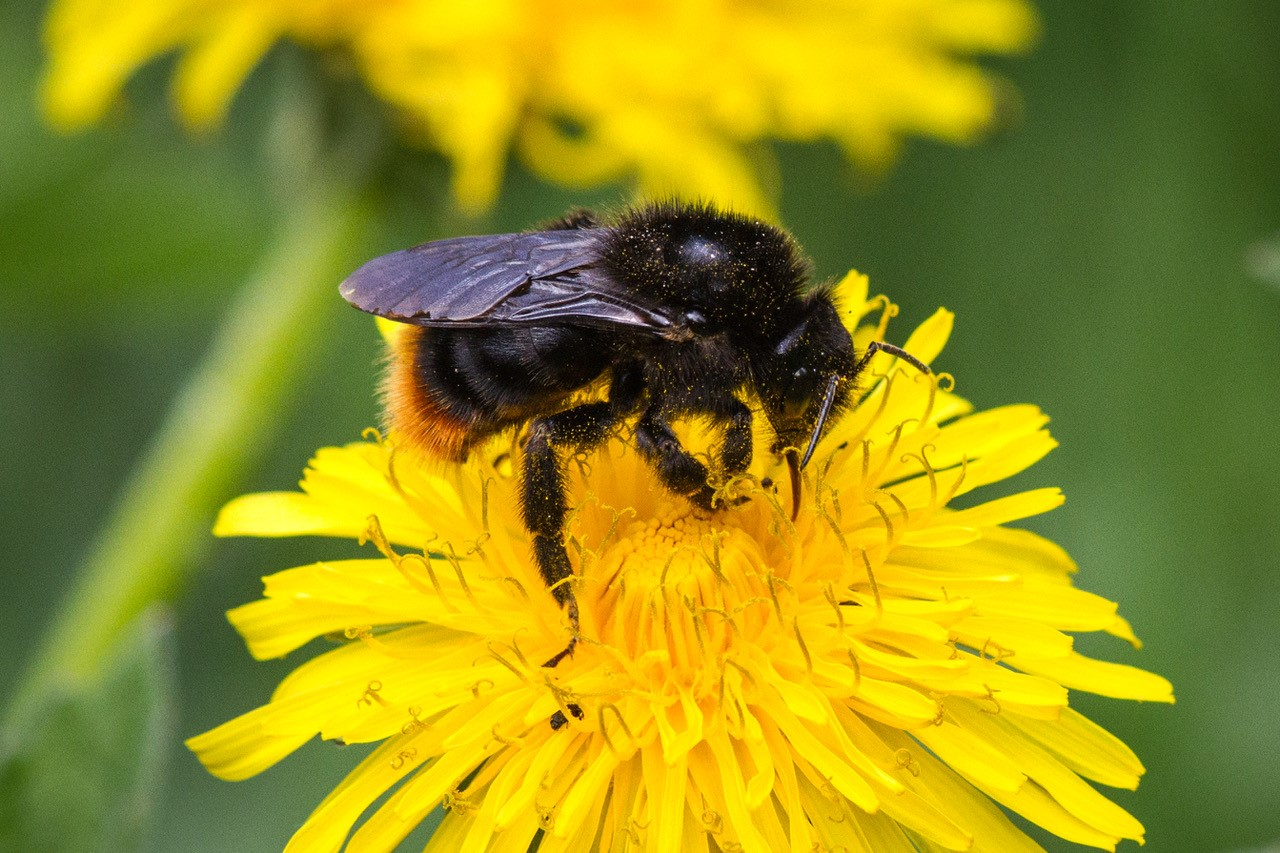Local naturalist, Charlotte Rankin, introduces the Red-tailed Bumblebee, a bumblebee that can be commonly found in gardens and parks.
One of the most common and widespread bees in the UK, the Red-tailed Bumblebee is found in a great variety of habitats. As the name suggests, Red-tailed Bumblebees have prominent red tails that cover one-quarter of their abdomen. Queens have jet-black bodies with a red tail and workers resemble small queens. Males have yellow-haired bands on their head and midriff, with a distinctive yellow ‘moustache’ on their face. It is a common and widespread bumblebee in the North East and Albany Hancock was the first to record this species in the North East in 1827.
One of the first bees to be seen in the year, queens typically emerge from hibernation in March. Queens establish their nests in underground cavities such as old mammal burrows and sometimes amongst piles of rubble. The Latin name (‘lapidarius’: of or related to stone) is derived from the species’ tendency to nest under stones, which today also includes patio slabs.
Nests can be very large with up to 300 female workers and can persist for three to four months. The workers look after their developing siblings and collect nectar and pollen to bring back to the nest. Queens and workers collect pollen on their hind legs in specialised ‘pollen baskets’. As common and widespread species, Red-tailed bumblebees visit a great variety of flowering plants for nectar and pollen.
Towards the end of the nest’s life, the queen switches to the production of males and new queens. Once mated, new queens enter hibernation until the following spring, or in the south, may establish a later season nest. By this point, the old nest has naturally died away along with the males.
Red-tailed Bumblebees nests are attacked by a species of cuckoo bumblebee, the Red-tailed Cuckoo Bee (Bombus rupestris). Emerging later than queens, females take over a nest by killing the queen and fooling the workers into rearing her own offspring. The Red-tailed Cuckoo Bee is considered a regionally scarce species in Bumblebees of North East England.
Discover more
The Red-tailed Bumblebee is a target bee species of the North East Bee Hunt. You can view a detailed species profile of this bee on the North East Bee Hunt webpage here.
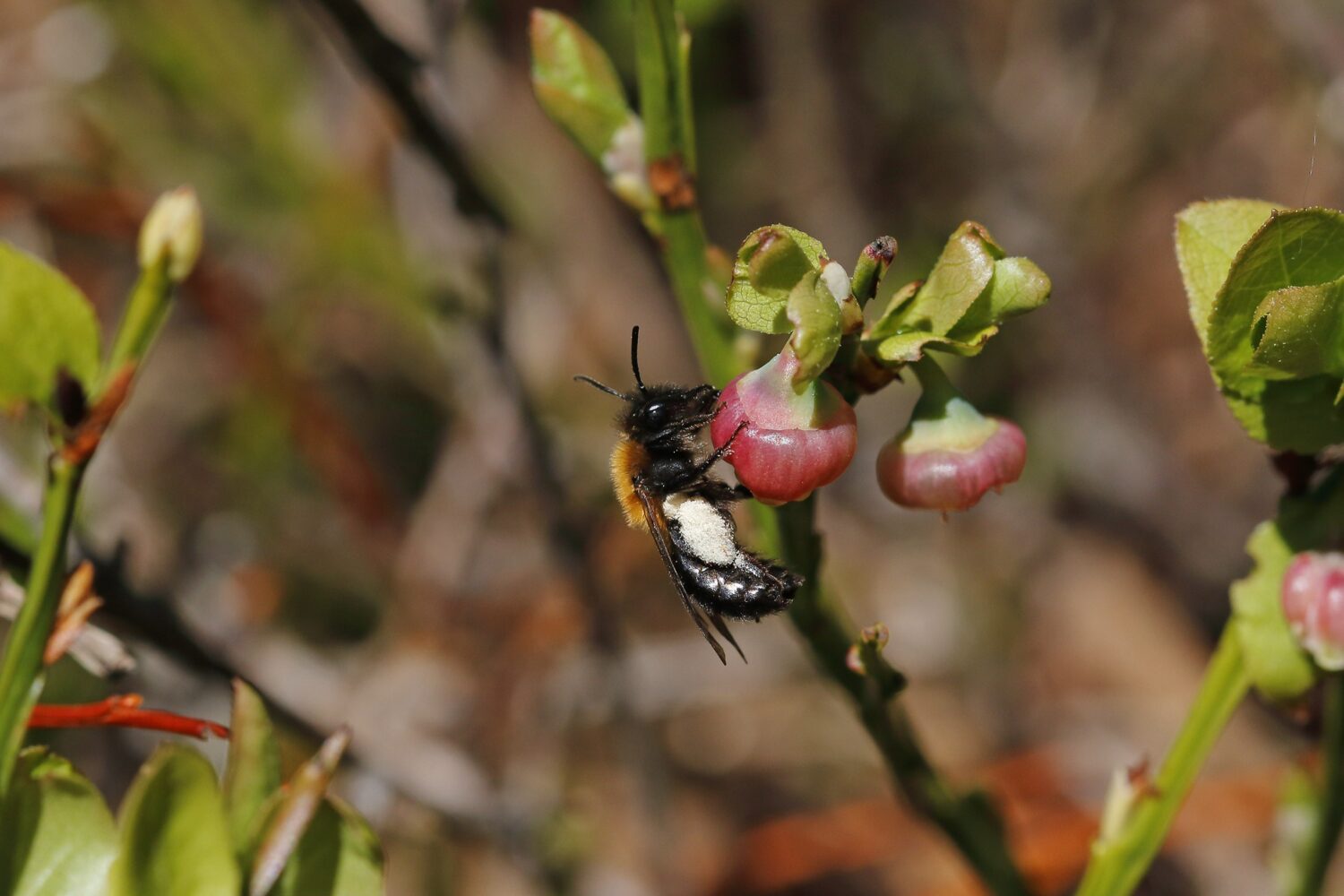
Join the North East Bee Hunt
Urban or rural, beginner or expert, we need your help to record eight distinctive bees across the North East this spring and summer.
Your records can add to our understanding of bees in the region and inform conservation and monitoring efforts.
Taking part is easy and every record counts, wherever you live in the region. Records of all bee species are encouraged.
